| Revista Umělec 2006/3 >> Beauty on the Bottom, in Bytom. ExGirls’ Bad News | Lista de todas las ediciones | ||||||||||||
|
|||||||||||||
Beauty on the Bottom, in Bytom. ExGirls’ Bad NewsRevista Umělec 2006/301.03.2006 William Hollister | Teoría | en cs de |
|||||||||||||
|
Curators Magdalena Ujma and Joanna Zielińska have picked up Helen of Troy’s tale where she left it. Carefully crafted for Bytom – an industrial town in Polish Silesia surrounded by the steep slag-hills of discontinued coal-mines – this exhibition seeks to reveal a sublime nuance that lurks within contemporary ideas of beauty, and is visible in news-media imagery. Last year, the two curators – who identify themselves collectively as “Exgirls” – had presented Polish artists in a show entitled “Beauty.” Concluding from the results that “beauty tends to manifest itself in the images of tragic events and disasters,” the curators collected for “Bad News” alternate approaches to the aesthetic form, by reaching outwards internationally in search of Beauty’s more devastating boundary.
For this new show, substance is given a backseat to medium; the beauty of the body, now a kitsch icon for soap commercials, has been surrendered to the aesthetic of information about world events as filtered through conventional news media – the beauty of blown-up cars, the former Iraq leader’s fugitive hideout, scenes of terrorist kidnappings, and specific black scenes of the oil market – are all set against violent abstractions where any clear context of an event is smudged. Masterfully woven into the separate rooms of Bytom’s Kronika gallery, a German sandstone building on the town’s main square, Exgirls have coherently depicted beauty’s decay by juxtaposing artists, who work within a similar idiom, in visual confrontation with each other. Suspect Terrain Installed in a former upper-story bedroom, Antoine Prum’s half-hour video, Mondo Veneziano- High Noon in a Sinking City (2005), functions formally as the show’s key. The film depicts cluttered curatorial culture that is currently cultivated in Europe. In it, stilted actors elegantly gesture in a deliberately theatrical set of a Venice, empty of tourists, uttering pretentious phrases about the role of art; the passages are derived mostly from Christoph Tannert and Ute Tiscler’s 2005 comic but thorough “bible” for contemporary art curators, “Men in Black, the Handbook of Curatorial Practice.” The dreary (albeit coherent) dialogues in the film are periodically interrupted by highly stylized and delightfully violent film-noir killings. There is a curious irony of importing this film – that premiered as the Luxembourg contribution to the Biennale in Venice, the capital city of contemporary art – and using it to anchor an exhibition in Bytom, one of the most depressing cities in Europe. Indeed, some Polish cultural pundits have labeled this show “Mondo Bytomiano.” At first visit, the only thing Bytom has in common with Venice is that it is sinking. Whereas Venice is slowly sliding into the mire of a northern Adriatic bay, Bytom is collapsing into the labyrinth of centuries of mining tunnels. As such, the power of Janek Simon’s trick installation, Lekkie trzęsienie ziemi (A Minor Earthquake, 2004), is its play on the present fear that the Kronika gallery building, so recently restored, might collapse into a fissure opened by the shifting substrata. Simon’s work is a glass of milk wired into an unseen device that jiggles periodically, as it would during an earthquake. Should such unstable structures seem a strange place to situate an ambitious international exhibition, one must understand the unique cultural context of Poland. With nearly forty million people, the country is composed of city-states. Although hardly ancient Greece or Renaissance Italy, the regions are far enough away from each other for unique cultural milieus to evolve. Bytom, being a satellite city of Katowice, is thus fertile land for anyone, within the country’s cultural network, to colonize. Kronika gallery is, like almost all of Poland’s best galleries, supported by the city where it is located. This ideal has unfortunately been undermined by local politics, and is threatened with total destruction by a de-facto collaboration among indignant activist-artists, gallery owners, curators and dogmatic government officials. Even though Poland’s governing politics have swung towards an intolerant extreme that wishes to exclude radical or personal artistic vision, there is no significant alternative or private network of galleries in the country capable of supporting such rich artistic discourse. Degrees of Abstraction Set in an adjacent room to Mondo Veneziano is Black September (2002), an installation by Chris Draeger, an artist recommended to Exgirls by Prague-based gallery owner Alberto Di Stefano. A scene of a disaster par excellence, Kronika’s bedroom has been transformed into the hotel bedroom at the 1972 olympics, with blood spattered everywhere. With LPs scattered on the ground with bedsheets, books and such, with television playing clear indications of the period mark place content to the kidnapping in 1972 of the Israeli Olympic team by Palestinians. A video film is presented, on period TVs, depicting the hostages and capturers alike entranced not only by their own predicament, but by the live news-media presentation of the unfolding situation – their own bad news. As few spectators would recognize the events, now removed by three decades, the aesthetic of the event is thus unveiled – something familiar, with terrorists and such, but disjointed from living memory. Draeger’s account of what happened with captors and hostages is as fictitious as the media images that portrayed; but from a Bytom’s eye view, both versions are safe – they are far away, and pose no threat to the Polish status quo. Working with imagery further abstracted is John Mikel Euba’s five-minute video Gowar (2005). Whereas Ujma and Zielińska incorporated Draeger and Prum’s works into pre-existing architecture of the gallery that used to be a German town-house, Gowar had its own architecture constructed complete with smooth dry-walls, around which the spectator would have to walk through a narrow passage, maximizing sensory isolation to see the short video. Although highly dramatic a la Bertolucci, scenes of captor and captive are entirely removed from context. Set at its most refined, the aesthetic of the act is clearly articulated in conscious exclusion of context. Elsewhere, simple news photographs of Saddam Hussein’s dingy hiding place are the subject of Sean Snyder’s The Site (2004-2005). The well-known news images speak for themselves, but by setting the pictures with first hand journalistic descriptions Snyder shows reality as a cubistic mosaic where “western” consumer items, such as a Mars candy bar, tend to be highlighted. The news reader thus can no longer be a witness to any truthful narration of bad news but, as with descriptions of beauty, gravitates towards anything familiar. In Snyder’s presentation, truth is subordinated to the aesthetic. Two Polish relics anchor the presentation locally. Zbignew Liberra’s familiar parodies of famous war photographs, including one depicting Che Guevara rising from his deathbed guerny to accept a light from one of the Bolivian officers who killed him, Pozytywy (Positives, 2004), pursues Snyder’s questioning of the boundary of truth and representation by inverting the imagery with humor. Wilhelm Sasnal’s film Samoc hody i ludzie (Cars and People, 2001) is a simple video of toy vehicles being blown up. Portugese artist Carla Cruz’s sincere engagement with the world oil market, with hundreds of pen and ink drawings of Blood 4 Oil (2005), is a refreshing and artistic alternative to Poland’s domestic playful cynicism. Bellicose in Bytom For all of the art presented, there is a distinct distance between the form, within which information is delivered, and the content through which information is presented. Because of the artifice of the works, the spectator in this show is detached from the reality of the events documented, and is thus free to meditate on the medium and form of delivery. One might argue that in this context, the main installation of Czech artists Milan Mikuláštík, Dan Vlček and Richard Bakeš, entitled You’re all Queer (2006) was inappropriate. That’s what Kronika gallery manager Sebastian Cichocki implied when these artists, collectively called Guma Guar, unveiled their work, printed in the office of this magazine, depicting Pope Benedict holding the severed head of Elton John accompanied by a scribbled statement “you’re all queer.” They put it on the staircase wall just prior to the exhibition opening. In a scene that could have been in Plum’s Venetian film, the Czech artists threatened to take down all their contributions and to bring the art home if the work wasn’t to be used. Although caught by surprise by Guma Guar’s calculated intervention, Ujma and Zielińska accepted the work for the show, apparently worried not so much about the content than about the potential loss of the Czech artists as participants, and the consequential loss of a generous grant from the Visegrad foundation. Nevertheless, Cichocki, perhaps having studied "Men in Black...", but clearly wary of an impending legal struggle that he hadn’t been prepared for, pulled the poster down and erased the suspect writing as soon as the opening night party had ended. Guma Guar had arrived from the neighboring Czech Republic for installation with only vague comprehension of the Polish legal and political situation; but for their surprise installation, they had done their homework about Cichocki’s gallery and had read Exgirls’ curatorial objectives. On the curator’s web page, Exgirls was formed “for intense promotion of gender and socially involved arts.” And Cichocki’s Kronika gallery press release defines its role as developing projects “dealing with the specific character as well as current social and cultural issues of the region.” One might argue that the high-resolution digital collage – with splotchy red blood and awkward proportions – is a far cry from Cranach’s Judith and Holofernes artistically. But conceptually, the appropriateness to the Bad News is beyond question. To be sure, Cichocki’s concerns about the last-minute installation were legitimate in light of developments in Polish politics. Like some medieval legend, an anonymous complaint about the Guma Guar work was in fact filed with the Bytom police, and there is an investigation pending to determine if the work might be insulting to the dominant religion of Poland. An ambiguous law against such slander remains largely unchallenged in Polish law, and several exhibitions in Poland have closed because of it, and one artist, Dorota Nieznalska, has been in court for several years. By pointing-out oppressive aspects of Catholicism towards gays, the jejune Guma Guar impulsively sought to fiddle with a neighboring country’s regulations governing free speech. But they dumped the legal burden, and ultimate responsibility, squarely on the gallery, whose representatives they barely knew. Outside of the rarified art-world of artists, curators and gallery owners, there are effective ways of engaging social causes. Activist groups, that seek to alter legal structures, plan acts of civil disobedience working closely with lawyers and careful strategy. Guma Guar sometimes claims to be activist activists, other times they say that they are artists; either way they did not consider legal support necessary, preferring to leave that real burden on the host gallery. If it is true that this effort, that Ujma has defined as “betrayal,” to consciously surprise the curators at the last minute with a very politically potent art work, were really to modify Polish laws and opinion, it appears to have failed. As a publicity stunt, the ongoing media circus surrounding Bad News has been brilliant for just about everyone involved. Cichocki has since taken the whole issue, and prepared his own presentation as a palimpsest upon the work of Exgirls, entitled “Art in the Service of the Lefties,” for which he has secured further exhibition space in Warsaw. In contrast to Bad News exhibition, for which the curators reached out as far as possible to illustrate a theme, Cichocki limited his “rapid reaction exhibition” to artists with whom he is acquainted. The thoughtful efforts of Ujma and Zielińska, to carry on an international dialogue with their own previous shows and with the Polish polis, have been for the moment eclipsed by Cichocki’s show, and by the curator’s own efforts to manipulate the media’s reaction to the Exgirls’ show. Bad News is expected to travel to Gdansk; meanwhile, Guma Guar is feeling virtuous, and boasting of the tendentious internet debate by people wondering why the photoshopped head of Elton John – surely not “the face that launched a thousand ships” – is smiling.
01.03.2006
Artículos recomendados
|
|||||||||||||
|
04.02.2020 10:17
Letošní 50. ročník Art Basel přilákal celkem 93 000 návštěvníků a sběratelů z 80 zemí světa. 290 prémiových galerií představilo umělecká díla od počátku 20. století až po současnost. Hlavní sektor přehlídky, tradičně v prvním patře výstavního prostoru, představil 232 předních galerií z celého světa nabízející umění nejvyšší kvality. Veletrh ukázal vzestupný trend prodeje prostřednictvím galerií jak soukromým sbírkám, tak i institucím. Kromě hlavního veletrhu stály za návštěvu i ty přidružené: Volta, Liste a Photo Basel, k tomu doprovodné programy a výstavy v místních institucích, které kvalitou daleko přesahují hranice města tj. Kunsthalle Basel, Kunstmuseum, Tinguely muzeum nebo Fondation Beyeler.
|








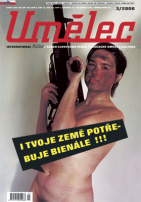





















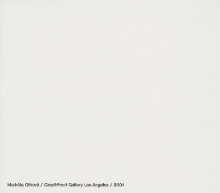
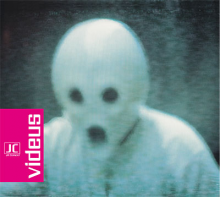
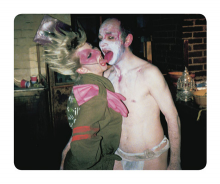
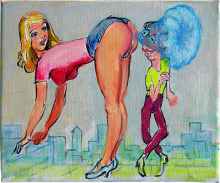


 We Are Rising National Gallery For You! Go to Kyjov by Krásná Lípa no.37.
We Are Rising National Gallery For You! Go to Kyjov by Krásná Lípa no.37.
Comentarios
Actualmente no hay comentariosAgregar nuevo comentario